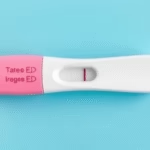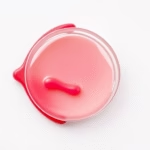Understanding Implantation Bleeding
When a fertilized egg attaches itself to the lining of the uterus, it can cause a phenomenon known as implantation bleeding. This light spotting occurs approximately six to twelve days after conception and can be one of the earliest signs of pregnancy. Many individuals may question whether it is possible to pass tissue during this bleeding. To clarify, implantation bleeding is typically much lighter than a menstrual period, often appearing as pink or brown spotting rather than bright red. It is essential to recognize that while some individuals may experience cramping or mild discomfort during this time, the actual bleeding is usually minimal.
Generally, passing tissue during implantation bleeding is not common. The insertion of a fertilized egg into the uterine wall does not result in tissue shedding like menstruation. If tissue is passed, it is vital to consult a healthcare professional to ensure that everything is progressing as it should be. Understanding the differences between implantation bleeding and menstrual bleeding can help individuals assess their reproductive health more accurately and respond appropriately to their bodies.
What Does Implantation Bleeding Look Like?
Identifying how implantation bleeding looks can help individuals distinguish between different types of bleeding they may encounter. Implantation bleeding is often light, lasting a few hours to a couple of days, and is generally not accompanied by large clots or heavy flow. Instead, it can appear as:
- Light Pink or Brown Color: Unlike menstrual blood, which is often bright red, implantation bleeding is usually a lighter hue.
- Minimal Flow: This spotting is often so light that it may not require a tampon or pad.
- Duration: Implantation bleeding lasts from a few hours to a couple of days maximum, significantly shorter than a regular menstrual cycle.
Recognizing these characteristics can assist people in determining if they are experiencing implantation bleeding or another type of bleeding, especially if they are trying to conceive.
How Is Implantation Bleeding Different from a Period?
Many people trying to conceive find themselves questioning the differences between implantation bleeding and their regular periods. Understanding these distinctions is crucial for a better grasp of one’s reproductive health. Key differences include:
- Timing: Implantation bleeding occurs about a week before a missed period, typically around the time one would expect their menstrual cycle to start.
- Color: While periods can range in color, implantation bleeding is usually light pink or brown.
- Flow: Menstrual flow tends to be much heavier, often necessitating more sanitary products.
- Associated Symptoms: Periods may come with various symptoms, including bloating and mood swings, while implantation bleeding may only have mild cramping.
Recognizing these differences can better help individuals determine their reproductive status and what actions to take next. If there is uncertainty or concern, consulting with a healthcare provider is advisable.
What Are the Causes of Implantation Bleeding?
Understanding what causes implantation bleeding can shed light on a naturally occurring process during early pregnancy. Here are the primary causes:
- Fertilized Egg Attachment: The main cause is the attachment of the fertilized egg to the uterus, which can lead to small blood vessels breaking.
- Hormonal Changes: Rapid hormonal changes can cause various symptoms, including light spotting.
For most, implantation bleeding is a normal sign of early-stage pregnancy. It is essential to differentiate this from potential issues such as miscarriage or ectopic pregnancy, which may present with heavier or more alarming symptoms. If any uncertainties arise, seeking professional medical advice is recommended.
Should You Consult a Doctor About Implantation Bleeding?
While implantation bleeding is generally not a cause for concern, individuals may wonder when it is appropriate to consult a healthcare provider. Here are some instances when reaching out to a doctor could be helpful:
- Heavy Bleeding: If the bleeding resembles a period or is significantly heavier, consult a healthcare professional.
- Passing Tissue: If tissue is passed alongside bleeding, it is crucial to get a professional opinion.
- Severe Cramping: While mild cramping can accompany implantation, severe pain should be evaluated.
Monitoring and being aware of one’s body and its reactions is vital during this period. Keeping a journal of symptoms can also aid discussions with healthcare professionals.
Can You Experience Other Symptoms with Implantation Bleeding?
While not everyone experiences symptoms associated with implantation bleeding, understanding potential signs can help. Common symptoms aside from the bleeding itself may include:
- Mild Cramping: This is common, often described as a light pulling sensation.
- Breast Tenderness: Hormonal changes can result in sensitive or sore breasts.
- Nausea: Some individuals may start experiencing mild nausea or morning sickness early.
These symptoms can also overlap with premenstrual symptoms, so it’s essential to take note of timing and intensity for a better assessment of whether pregnancy is likely.
What to Do if You Suspect Implantation Bleeding?
If you suspect that the bleeding you are experiencing is due to implantation, here are steps to take:
- Monitor Symptoms: Keep track of your symptoms, their timing, and intensity to discuss with your healthcare provider.
- Take a Pregnancy Test: If your period does not arrive within a few days of your expected date, consider taking a home pregnancy test.
- Consult a Healthcare Professional: If bleeding intensifies or concerns arise, always reach out to a healthcare provider for advice.
Being vigilant and proactive in managing your health can lead to better outcomes during early pregnancy.
Final Thoughts
In summary, implantation bleeding is a light spotting that can occur when a fertilized egg attaches to the uterine lining. While it may be accompanied by mild symptoms, passing tissue is not common in this situation. By understanding how to differentiate implantation bleeding from a menstrual period, recognizing causes, and noting additional symptoms, individuals can make informed decisions regarding their reproductive health. If any uncertainty arises, an open dialogue with a healthcare professional can provide clarity and guidance.
Here are some frequently asked questions about implantation bleeding:
- Can you pass tissue with implantation bleeding? Passing tissue during implantation bleeding is uncommon; consult a doctor if this occurs.
- How long does implantation bleeding last? Implantation bleeding typically lasts from a few hours up to two days.
- Can implantation bleeding be heavy? No, it usually is much lighter than a normal menstrual period.
- How soon after implantation bleeding can you take a pregnancy test? It’s advisable to wait a few days after the expected date of your period for the most accurate results.
- Should I worry if I experience heavy bleeding instead of light spotting? Yes, consult a healthcare professional for an evaluation in such cases.
Further Reading
What Type of Psychotherapy Is Best for Anxiety?







